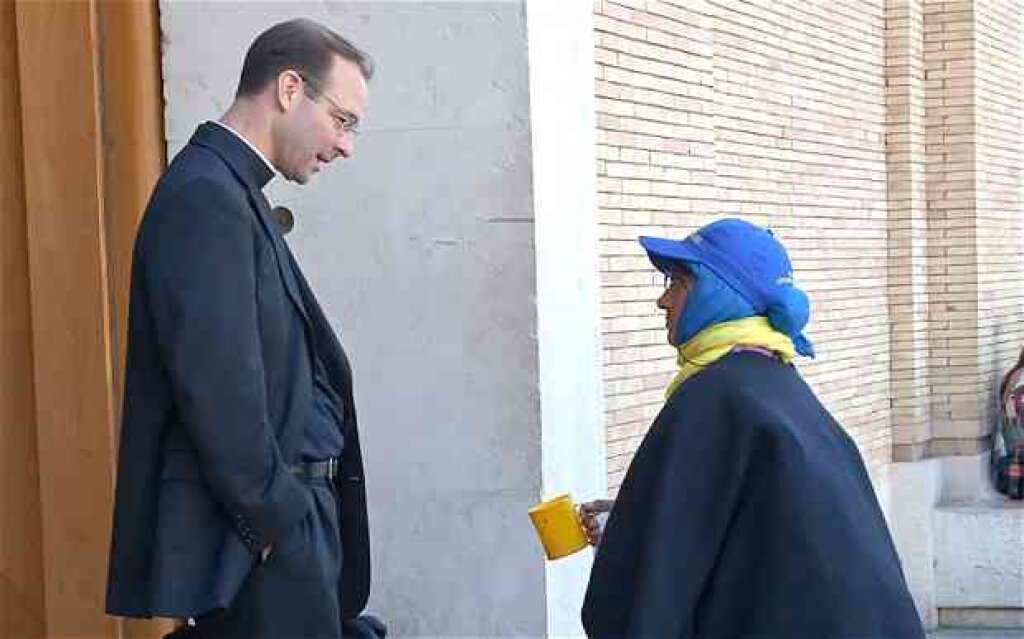Sara Ruiz is a PhD candidate in Slavic Languages and Literatures at the University of Michigan, working on the Second World War and the Holocaust in Soviet culture.
In his closing address to the jury, former SS commander and head of Einsatzgruppe D Walter Bierkamp callously dismisses the Holocaust and rejects individual responsibility for his crimes. Like his counterpart Adolf Eichmann, Bierkamp cannot or will not think beyond the borders of Nazi language. His final statement to the court is then completely unremarkable—except for the fact that he never made it.
Walther Bierkamp died in May 1945, a full six months before the start of the Nuremberg Trials. His speech is an entirely imagined portrait of a Nazi war criminal, penned by the Soviet writer Lev Ginzburg in 1966. Attending a real war crimes trial three years earlier had led him to experiment with the generic conventions of criminal trials. He sought to understand how these conventions could be used to discuss what a court cannot: how to understand perpetrators of atrocity, and how perpetrators understand themselves.
The world’s first Nazi war crimes trial was held in July 1943, in the Soviet city of Krasnodar. Just six months after the city was liberated from German occupation, eleven defendants—all Soviet citizens—stood before a military tribunal, accused of collaborating with the enemy. They had been members of a collaborationist unit of an Einsatzgruppen death squad that operated in Ukraine and southern Russia from 1941-1943. All were convicted of high treason: eight men sentenced to death by public hanging and three to 20 years of hard labor in a Soviet prison camp. The trial was a media sensation, and extensive coverage of Nazi war crimes worked to motivate civilians and soldiers alike to fight to the death in defense of their homeland.
Beyond their use as wartime propaganda, the court proceedings at Krasnodar directly informed the investigative work of the International Military Tribunal and eventually acted as a model for the Nuremberg Trials. A great deal of the evidence presented at Nuremberg had been collected by Soviet sources, including war correspondent Vasily Grossman’s careful account of the infrastructure of genocide at the Treblinka death camp. However, despite the involvement of the Soviet Union in documenting, investigating, and prosecuting the crimes of the Holocaust, this work was carried out with minimal mention of its victims. While the Soviet state never denied that Jews were victims of Nazi persecution, the Final Solution was generally subsumed within a larger narrative of Nazi cruelty and Soviet suffering.
This rhetoric artificially separated the intertwined catastrophes of the Second World War and the Holocaust, meaning that the narrative lines of Soviet patriotism and Jewish memory would only occasionally intersect. One of these meeting points was in the courtroom, where trials of Soviet collaborators provided Soviet Jews with a space to voice urgent questions of wartime victimhood, guilt, and accountability.
The USSR held hundreds of war crimes trials from 1943 until the Soviet collapse. Shortly after the end of the Second World War, the pace of these trials would slow, and they were rarely publicized. Then, in the 1960s, a constellation of Cold-War foreign policy objectives and domestic political shifts precipitated what scholars have called the “Second Wave” of war crimes trials in the USSR.
Multiple high-profile trials throughout the 1960s unintentionally provided institutional legitimacy to expressions of Soviet Jewish memory. In addition, the standard format of the trials and their media coverage generated a set of textual, verbal, and visual tropes that formed a Soviet lexicon of the Holocaust. And who better to help oversee this linguistic project than a translator?
Lev Vladimirovich Ginzburg (1921-1980) was a Soviet-Jewish journalist and Russia’s preeminent translator of German literature. During a trip to West Germany in 1961, he wrote a series of essays about former Nazi officials who were living comfortably in the West. Serialized in two major media outlets (Literaturnaia gazeta and Novoe vremia), three of the essays centered on the ongoing trial of Adolf Eichmann. Since no Soviet journalists actually attended the trial, Ginzburg’s secondhand reporting amounted to some of the most detailed coverage of the event to be found in the Soviet press.
While Hannah Arendt’s Eichmann in Jerusalem (1963) was never published in the Soviet Union, Ginzburg’s essays were signed into print on May 31, 1962—the day Eichmann was executed. Titled The Price of Ashes (Tsena pepla), the essay collection would be the first file in Ginzburg’s decade-long investigation of the Holocaust and its perpetrators.
In 1963, another trial presented Ginzburg with an opportunity to investigate—literally and metaphorically—Nazi crimes committed on Soviet territory. By what seems to be pure coincidence, Ginzburg’s research eventually led him to Krasnodar—the same city where the first Soviet collaborators had been put on trial in 1943. In conversation with local police and KGB, Ginzburg learned of an ongoing investigation into Soviet citizens who had served in Einsatzgruppen death squads and participated in the murder of Jews.
Ginzburg detailed his unprecedented access to the mechanisms of Nazi crime and Soviet punishment in newspaper articles, a documentary film made with Ukrainian Jewish director Leon Mazrukho, and, finally, a book covering the crimes of Einsatzgruppe D, the postwar activities of the defendants, and the Krasnodar trial proceedings. The multimodal documentation of the trial was the result of a unique alignment between Soviet artistic production and the justice system. And since the official trial transcripts and KGB investigative files are still inaccessible to researchers, Ginzburg’s work represents a valuable historical archive in its own right.
Titled Abyss: A Narrative Based on Documents, the text mirrors the visual format and linguistic conventions of the courtroom: evidence is presented, statements are given, and judgement is passed. Abyss opens with a series of excerpts from Nazi directives, including the infamous “Commissar Order” to kill any captured Soviet political officers, and instructions for carrying out mass executions.
Ginzburg complicates the narrative flow of the trial by interrupting these streams of bureaucratic language with unannounced changes in format and voice. There is no delineation between Nazi paperwork, survivor testimony, criminal confessions, and Ginzburg’s own observations. In addition to the fictional address to the jury, Abyss includes an imaginary “Conversation with Walther Bierkamp,” presented as an interview between an unnamed journalist and the dead SS officer. The sudden changes in perspective and unclear levels of authenticity establish a critical distance between the historical event and its textual representation. Ginzburg disrupts a reader’s passive immersion in the world of the text, prompting critical reflection instead of emotional identification.
Ginzburg’s reporting on the Krasnodar trial reached a wide audience; first in serialized form for the literary magazine Znamia, and then in book form as Abyss. The 1966 publication was met with critical and commercial success, with glowing reviews from influential authors like Konstantin Simonov and two print runs of 150,000 copies each. Abyss also found success outside of the Soviet Union, particularly in Germany, where the Nazi officials named in Ginzburg’s book were found living in comfortable obscurity.
For a brief period in the 1960s, Ginzburg’s literary investigations aligned with official rhetoric that similarly juxtaposed German impunity with Soviet justice. In order to operate in a state-controlled discursive landscape, Ginzburg developed a distinctly Soviet response to the aesthetic and political limits of Holocaust representation. Without deviating from the language of the state, Abyss destabilizes the boundaries between fact and fiction, blending photographic realism with literary imagination. Imperceptibly, the predictable structure of a trial becomes unfamiliar as Abyss becomes a staged performance of a historical event. Participating (performing?) in a war crimes investigation and trial was an opportunity for Soviet Jews both to write themselves into the state archive and find a means for the public expression of Holocaust memory in a setting where doing so was generally disallowed.



